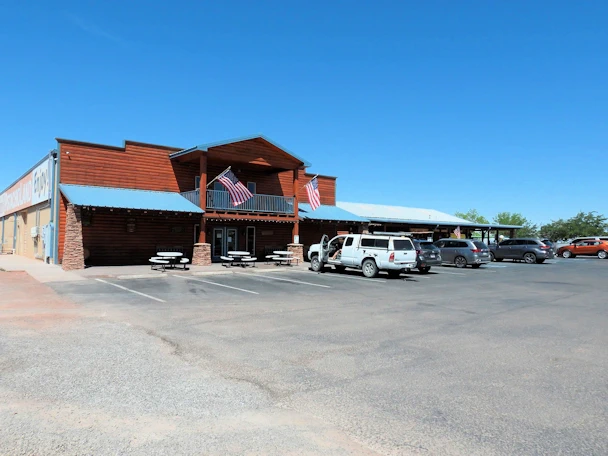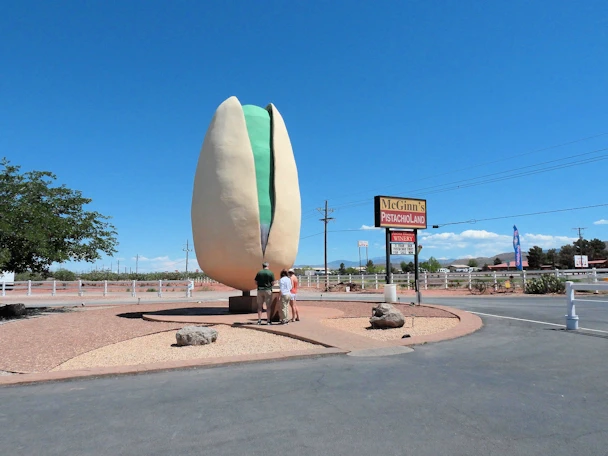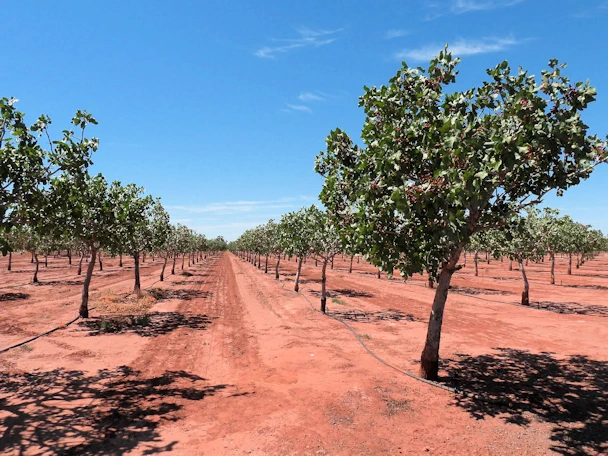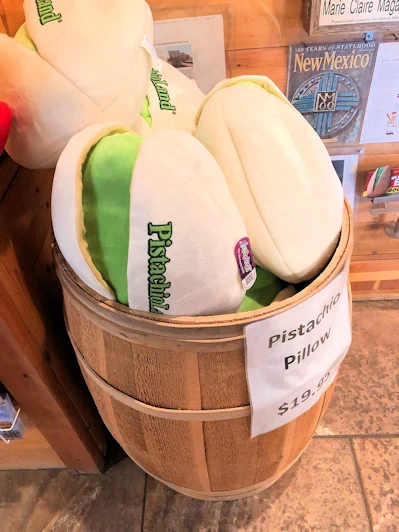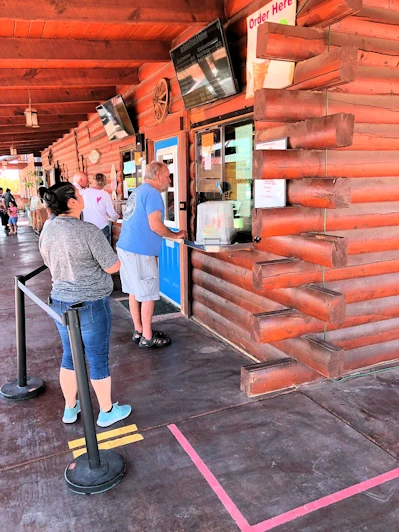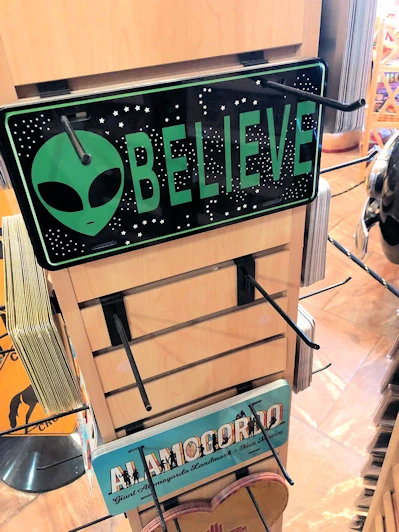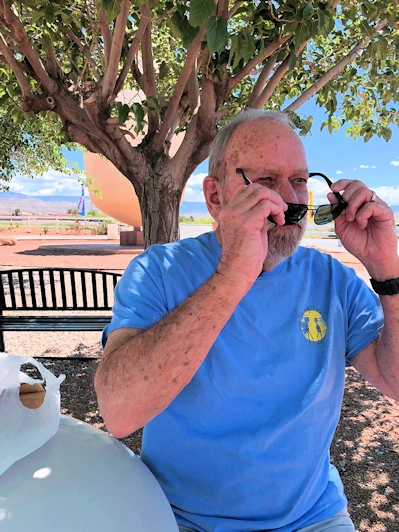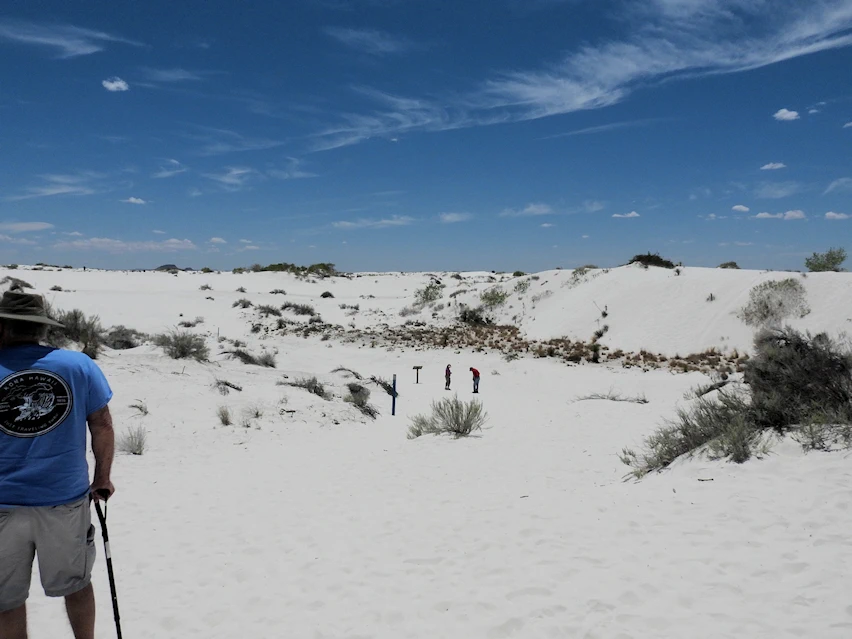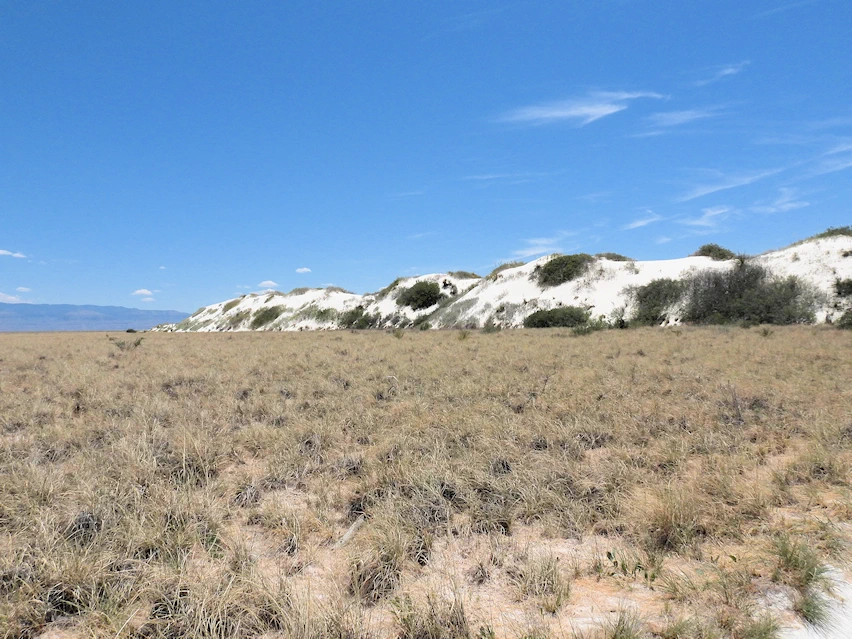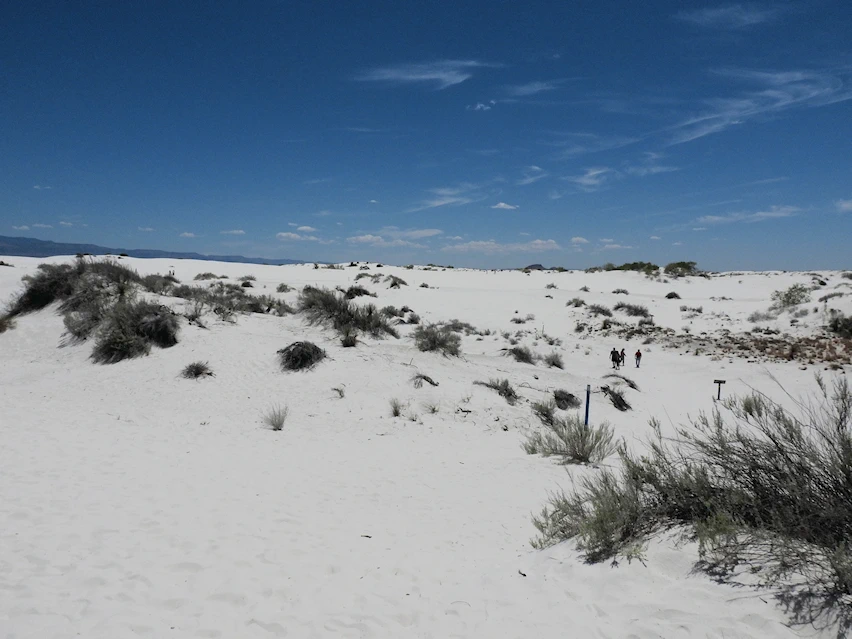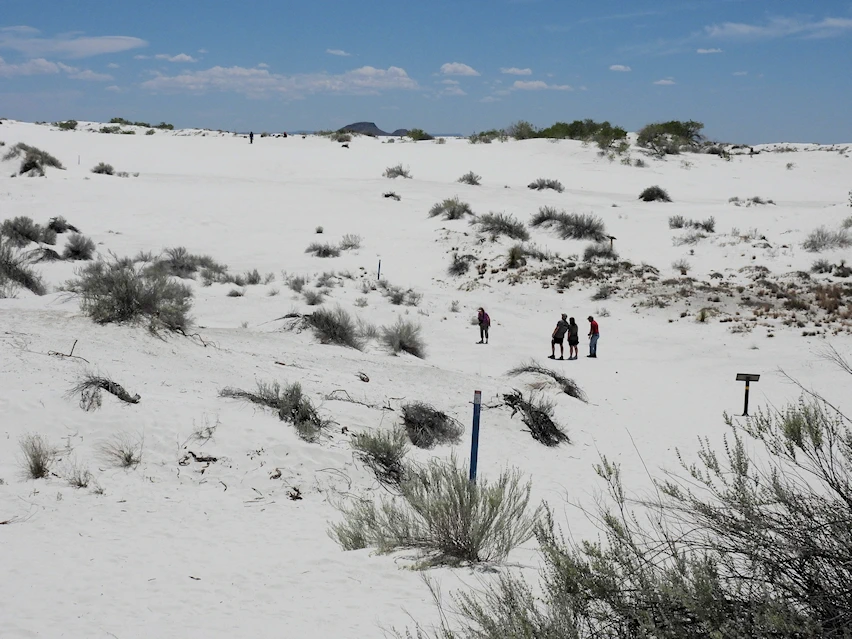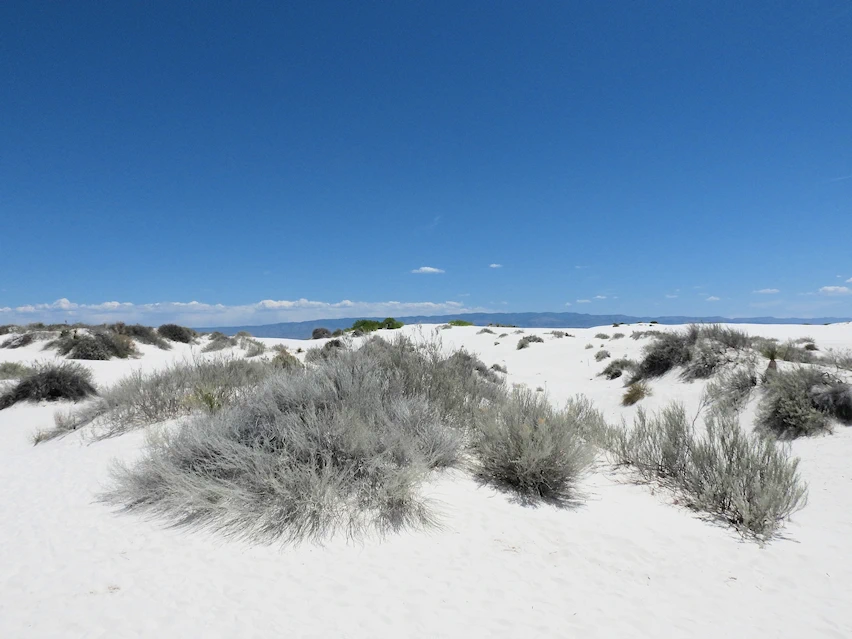Visit White Sands National Park
Explore the Magic of New Mexico’s White Sand Dunes
by Celeste Lipford and Terry Lipford - last updated on 12/23/2024
White Sands National Park New Mexico Overview Map
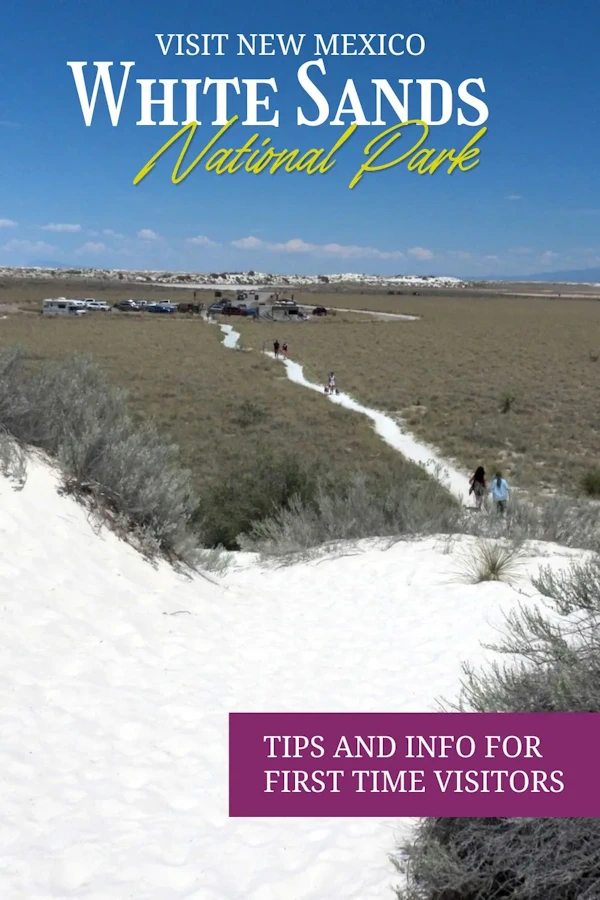
White Sands National Park, located in southern New Mexico, is a remarkable and unique landscape, known for its vast expanses of bright white sand dunes. It was formed by the erosion of gypsum from the surrounding mountains, which dissolved in the runoff, settled in the Tularosa Basin, and eventually crystallized into the white sand dunes that we see today.
White Sands National Park covers approximately 145,762 acres (about 227 square miles) of desert and is unique as the largest gypsum dune field in the world. It is one of only a few gypsum dune areas in the United States. The other notable gypsum sand dune areas include the Salt Plains National Wildlife Refuge in Oklahoma and the Great Salt Lake Desert in Utah, but neither is as expansive or as well-known as White Sands.
White Sands was originally established as a national monument in 1933 and was redesignated as a national park in December 2019, reflecting its importance and increasing its protection and recognition
The dunes constantly shift and change due to wind, moving several feet per year. Despite the harsh desert environment, the park is home to various plant and animal species. Some have adapted specifically to the white sands, such as the White Sands pupfish and the bleached earless lizard, which have evolved lighter coloring to blend in with the surroundings. Vegetation is sparse but includes hardy species like yucca, soap tree, and cottonwood trees.
There is evidence of human habitation dating back over 10,000 years. The park contains archaeological sites, including petroglyphs and ancient hearths, left behind by Native American peoples. It has also been a site of military significance. The White Sands Missile Range, located nearby, was established during World War II and played a crucial role in the development and testing of missiles, including the first atomic bomb test at the Trinity Site in 1945.
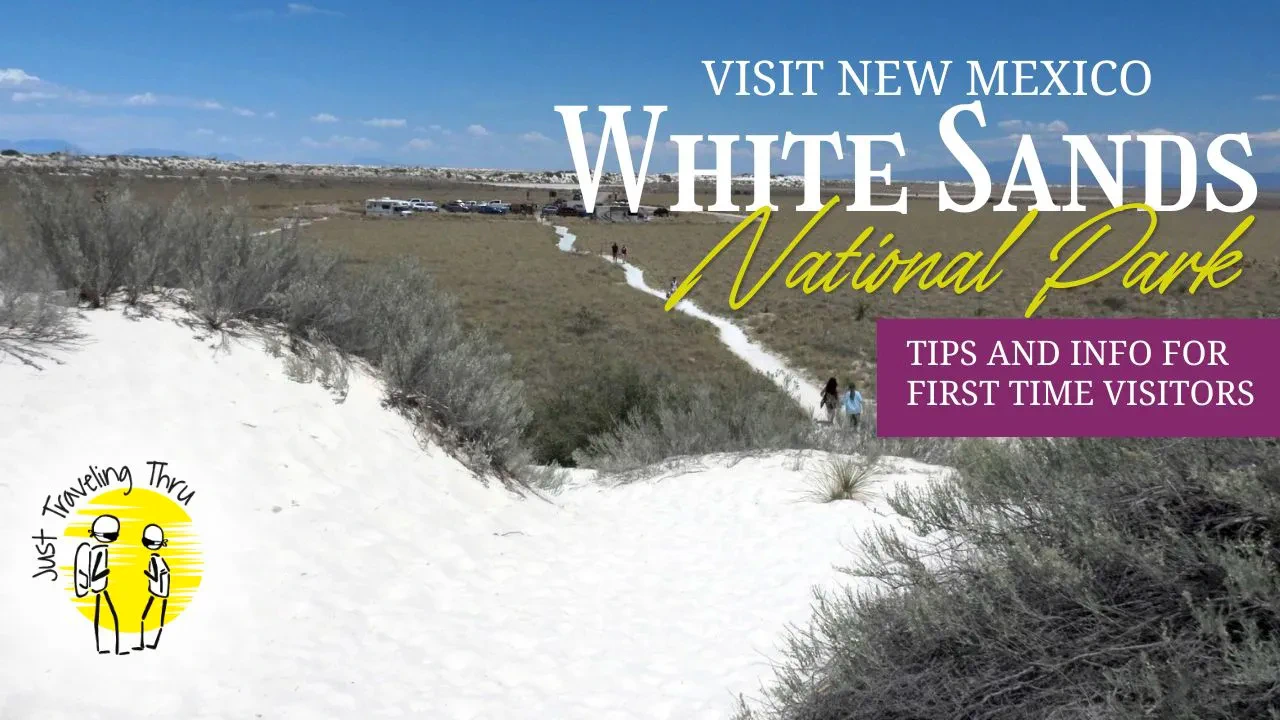
NOTE: This video is the property of Just Traveling Thru, LLC.
If you enjoy our videos click here to subscribe to our Youtube Channel.
Click the above video poster image to explore White Sands National Park with our comprehensive travel guide! This video offers an in-depth overview, including where it is, and information and tips for visiting including hours and what to expect while visiting White Sands National Park in New Mexico. We include unique images and videos of White Sands. At the end we cover a unique road trip stop we made along the way from Albuquerque to Alamogordo at Pistachio Land. Every road tripper should s top to rest their legs and pick up some unique gifts, snacks and even some local wine. Inspiring travel and providing information to help you have a great trip
Where is White Sands National Park Located? Map
Getting to White Sands National Park requires some driving. White Sands is located in the southwest corner of New Mexico and it is relatively remote and a fair distance from major cities:
- El Paso, Texas: About 90 miles (145 kilometers) southeast of White Sands. It takes approximately 1.5 hours to drive.
- Albuquerque, New Mexico: Roughly 220 miles (355 kilometers) northwest of White Sands. The drive time from Albuquerque to White Sands National Park takes about 3.5 to 4 hours.
- Santa Fe, New Mexico: Approximately 260 miles (420 kilometers) north of White Sands. The drive takes about 4.5 to 5 hours.
- Las Cruces, New Mexico: About 50 miles (80 kilometers) southwest of White Sands. It takes roughly 1 hour to drive.
- Tucson, Arizona: Around 230 miles (370 kilometers) west of White Sands. The drive takes approximately 4 hours.
Pistachio Land - On the Way to White Sands Map
This was day 4 of our Southwest Road-Trip and today's plan is to drive the 209 miles from our hotel in Albuquerque to Alamogordo, NM. We drove from Albuquerque and visited White Sands in the early afternoon. Just before entering Alamogordo, we saw McGinn's Pistachio Land Farm and decided to stop and check it out.
The large pistachio statue outside Pistachio Land in Alamogordo, New Mexico, is a notable attraction and serves as a popular photo spot. This giant pistachio sculpture is approximately 30 feet (9 meters) in length. It’s designed to resemble an oversized pistachio nut, complete with a realistic, textured surface. It certainly captured our attention.
We’d never heard of Pistachio Land and we’re delighted to say that the pistachio farm was much more than we expected. Not only did they have a giant pistachio sculpture out front but they carried a wide range of pistachio products, gifts, and even ice cream. Some of the best pistachio ice cream we’ve had. It was the perfect stop after a long drive. They even sell local wines and have a wine-tasting area!
The McGinn family started their 90 acre pistachio orchard in 1980. Today, the orchard contains over 12,500 trees. 14 acres of grapes are also grown at Pistachio Tree Ranch and 18 different varieties of wine are made at McGinn's Arena Blanca Winery on site.
We purchased a variety of pistachio nuts and even a few bottles of wine. Including the Alamogordo red and a bottle of the Loco Seco Pinot Grigio. When taking long road trips like this we prefer to have snacks available and some wine for hotel evenings is a fantastic way to avoid paying the high price of wine at restaurants.
More Info for PistachioLand
Image Credits
All of the above images are the property of Just Traveling Thru, LLC.
White Sands National Park Review and Experience Map
Our first sight of White Sands National Park was somewhere after we passed Three Rivers and before we reached Tularosa. The sand is so incredibly white, that it stood out distinctly on the horizon. After Tularosa and all the way into Alamogordo the White Sands were always visible on the horizon.
The visitor center itself is a national historic district. It was developed during the Great Depression of the 1930s as a job creation effort and is designed in Pueblo Revival style. It offers exhibits and a movie about the park. They are worth watching to get the most information about how the dunes were formed and the animals that live there and how some have become lighter over time which reflects the heat and keeps them cooler and hides them better. We found it fascinating and watched the entire thing.
During our visit we were not allowed to visit the entire length of the dunes drive due to the fact that it was closed due to a missile incident. White Sands Missile Range surrounds the park and active missile testing still takes place there. It is not uncommon for the closures to average twice a week for a few hours. In our case, it was completely closed off except for the first stop which allowed us to check out the Dunes Life Nature Trail. The trail is a 1 mile long loop trail.
Even though it was mid-May, it was very warm when we arrived. We could feel the heat radiating from the dunes as soon as we started walking the trail from the parking lot and by the time we crested the first dune we realized that planning to be there earlier in the morning would have been a good idea. It was kind of like sitting in a frying pan or maybe it is our age and we are more sensitive to the heat, I’m not sure.
Tip: we recommend planning your visit outside of the hottest times of the day. It seems obvious but the difference between the air temperature in the dunes and the surrounding areas can be noticeable, with the dunes often experiencing the upper end of the temperature range due to their reflective properties and the heat absorbed from the sun.
Tip: There are no services at the dunes once you leave the visitors center so make sure to bring your own food and water. You MUST carry water even when going just a short distance and sun screen is very important to avoid getting burned. It can occur very quickly in the dessert sand.
Even though we couldn’t see a portion of the park we found it to be a fascinating visit. Our earth is a fascinating place and learning about how such a unique desert was formed and the life that evolved to live in this area is a powerful reminder of the incredible diversity and resilience of life on Earth.
Things to Do at White Sands National Park
Scenic Drive
- Dunes Drive: An 8-mile (13 km) scenic drive that winds through the heart of the dunes, offering multiple pull-offs where visitors can stop, explore, and take photos. The road is paved for the first 5 miles, with the remaining section being a packed gypsum road.
Hiking - there are several hiking trails at the park
- Dune Life Nature Trail: A 1-mile (1.6 km) loop trail that offers interpretive signs about the plants and animals that inhabit the dunes. It's a great introduction to the park’s ecology.
- Playa Trail: A short, easy hike that leads to a seasonal lakebed (playa) and offers insights into the geology of the area.
- Alkali Flat Trail: A more challenging 5-mile (8 km) round-trip hike that takes you across the heart of the dunes to the edge of the alkali flat. This trail is marked by posts, but hikers should be prepared for soft sand and bring plenty of water.
- Interdune Boardwalk: A short, wheelchair-accessible boardwalk that provides a view of the dunes and information about the local flora and fauna.
Sand Sledding
- Sledding on the Dunes: One of the most popular activities at White Sands. Visitors can bring their own sleds or purchase/rent plastic sleds at the visitor center. The gypsum sand is softer and smoother than typical beach sand, making for a fun and unique sledding experience. This is an excellent idea if you have children along to make them more interested in exploring the dunes. However, be aware that walking up the dunes to sled down can take a lot out of you and your children. So be prepared to keep them hydrated and take rests. It’s also not exactly like snow sledding. The sand isn’t slippery like snow so it can be a bit awkward getting down the hill.
- The park website has more information about the best places to sled, click here to visit that page.
- Tip: It’s cheaper to purchase a sled in Alamogordo if money is an issue.
Ranger Programs
- Guided Hikes and Talks: Rangers offer a variety of guided programs, including full moon hikes, sunset strolls, and interpretive talks that explore the park’s natural and cultural history.
- Junior Ranger Program: A fun and educational program for kids that involves completing activities to earn a Junior Ranger badge.
Plan your visit
How to get to White Sands National Park?
From El Paso, Texas (Approx. 90 miles, 1.5 hours drive)
- Take exit 162 for US-54 E toward Alamogordo.
- Continue on US-54 E for about 70 miles.
- In Alamogordo, merge onto US-70 E via the ramp to Tularosa/Ruidoso.
- Continue on US-70 E for about 15 miles until you reach the entrance to White Sands National Park on the right.
From Albuquerque, New Mexico (Approx. 220 miles, 3.5-4 hours drive)
- Head south on I-25 S.
- Take exit 6 toward US-380 E toward Carrizozo.
- Follow US-380 E for about 95 miles.
- Turn right onto US-54 S and continue for about 55 miles to Alamogordo.
- Merge onto US-70 E via the ramp to Tularosa/Ruidoso.
- Continue on US-70 E for about 15 miles until you reach the entrance to White Sands National Park on the right.
What is the best time to visit White Sands?
Visiting in the Spring or Fall will give you the best temperatures, however, you should avoid Spring Break and Easter weeks when the park can be crowded. As we previously mentioned it was already getting very hot by Mid-May so try March and April. In the winter the temperatures can rise to about 50 or 60 degrees fahrenheit during the day but will get cold at night. It will be very quiet at this time. The summer is the peak travel time but will also likely have temperatures above 100 degrees.
What are the visiting hours at White Sands?
- The park is typically open from 7:00 AM to sunset.
- As mentioned earlier there can be park closings due to nearby missile testing.
- The visitor center is typically open from 9:00 AM to 5:00 PM.
- Always check the park website for more specific details and closings.
What are the fees when visiting White Sands?
- You may use your America the Beautiful National Park pass or Annual National Park Pass if you have one. We highly recommend getting one if you plan to visit several parks. If you don’t have a pass you can purchase one when you get there or purchase a one-day standard pass. The one-day pass is based on your method of arrival.
- By car: $25 per car load. This includes everyone in the car.
- By motorcyce: $20.
- By bicycle or on foot: $15.
What to bring when visiting White Sands?
- Water and Food: Lots and lots of water! Also bring snacks and food to prevent low blood sugar and to help keep the body cool.
- Hiking Shoes: It is difficult to walk in the sand. We didn’t walk very far but if you do plan to walk any distance appropriate hiking shoes will help as the sand is soft and you sink in as you go. Be prepared for sore calves if you don’t frequently walk in the sand.
Are pets allowed at White Sands National Park?
- Yes, pets are allowed but must be kept on a leash at all times. Owners should also ensure their pets stay hydrated and avoid hot surfaces, especially in the summer.
How hot does it get in White Sands National Park?
- In summer, temperatures can exceed 100°F (37°C) during the day, while nights can be much cooler. Visitors are advised to bring water and protect themselves from the sun.
- In winter, daytime temperatures at White Sands National Park are generally mild, typically ranging from 50°F to 60°F (10°C to 15°C). However, temperatures can vary, and during cold spells, they may drop to the low 40s°F (around 5°C). Overnight, temperatures often fall below freezing, averaging between 20°F and 30°F (-6°C to -1°C).
More Info for White Sands National Park
In the trip menu list below, a "dark filled circle" represents a destination where we stayed, and the "dark filled arrow" items below that circle location, represent the destinations we visited while in that city or location. A circle icon that is not filled represents a city that we visited or stayed in, but did not necessarily explore.
Click any link below to go directly to that page;
- Sandia Peak Tramway
- Petroglyph National Monument
- Old-Town Albuquerque
- National Museum of Nuclear Science & History
Alamogordo, NM
- Georgia O'Keeffe Museum, NM
- Museum of Indian Arts & Culture, NM
- Ojo Santa Fe Spa Resort, NM
- Bradbury Science Museum - Los Alamos, NM
- Los Alamos, NM
- Bandelier National Monument, NM
- Nambé Falls, NM
- Meow Wolf, NM
Chaco Culture National Historical Park, NM
Grand Canyon, AZ
Note: All images featured on this page are the exclusive property of Just Traveling Thru, LLC, unless otherwise stated. When images from external sources are used, full credit is given to the original creator, along with a link to the specified license or usage terms. We are committed to respecting copyright and intellectual property rights, ensuring that all third-party images are properly attributed. If you have any questions regarding image ownership or usage rights, please feel free to contact us.
To review any of our content, make suggestions and/or comments, please click the "About" menu link at the top of this page. You will find our "Contact Us" link on that drop-down menu.







